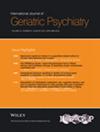The Combination of Physical Activity and Cognitive Games is Associated With Better Cognitive Performance and Gray Matter Volume in Older Adults
Abstract
Objectives
Investigate whether engaging in cognitive and physical activity is associated with cognitive performance and gray matter volume. Specifically, this study investigated the role of both activity types performed in close temporal proximity to each other.
Methods
Cognitively healthy older adults (n = 155; 73–78 years; 45% female) enrolled in the PATH Through Life study with valid cognitive, MRI and physical activity (PA) measures were included in the study. PA was objectively measured with a SenseWear Armband for 7 days. PA and cognitive engagement were self-reported through a 1-week activity diary. The number of 3-h periods in which ≥ 15 min of objective moderately vigorous physical activity (MVPA) > 3METs, cognitive activity, or both occurred, were assessed. Cognitive game activity periods were also coded. Associations between activity engagement and outcome measures were assessed with hierarchical regression models while controlling for age, sex, and education.
Results
For cognitive engagement, greater activity diversity was associated with better symbol digits modalities test performance (SDMT), while a greater number of cognitive activity periods were associated with better SDMT, and digit span backward performance. Greater cognitive game periods improved model fit for several cognitive outcomes and right hippocampal volume. MVPA periods were not associated with any outcome. The number of periods in which cognitive activity and MVPA were present together was associated with better immediate recall. Periods in which cognitive games and MVPA co-existed were associated with cognitive and volumetric outcomes.
Discussion
These findings support the notion that both cognitive and physical activity are positively related to brain health. They highlight the potential importance of performing both activity types in close temporal proximity to support the aging brain.

 求助内容:
求助内容: 应助结果提醒方式:
应助结果提醒方式:


